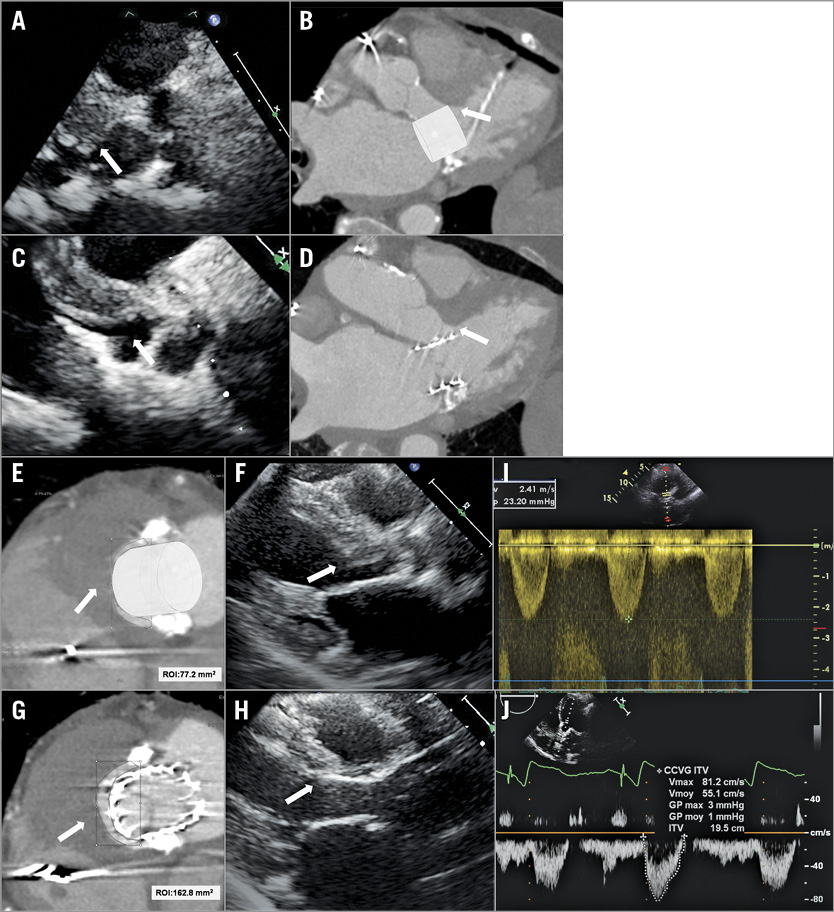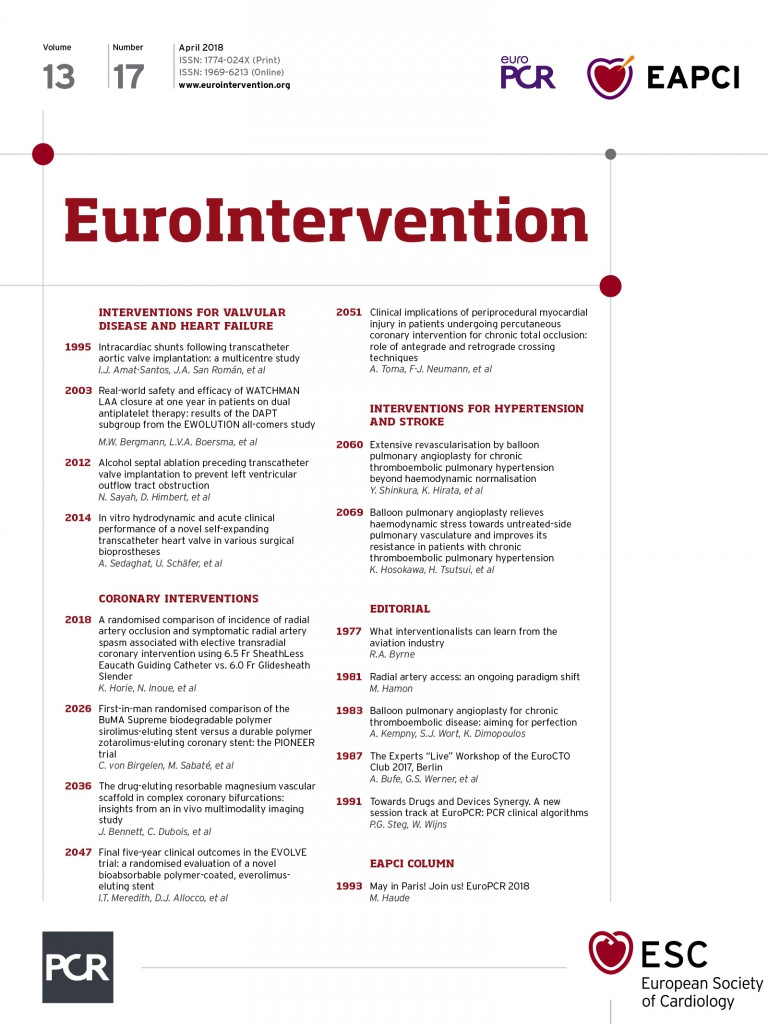

Left ventricular outflow tract (LVOT) obstruction is a life-threatening complication of both transcatheter aortic (TAVI) and mitral valve implantation (TMVI). Bail-out alcohol septal ablation (ASA) may be life-saving1-4. However, the results of ASA preceding TVI remain unknown.
An 81-year-old inoperable woman (Patient #1) was referred because of New York Heart Association (NYHA) Class III dyspnoea related to post-radiation severe mitral valve disease with massive annular calcification (MAC). Echocardiography and computed tomography demonstrated a high risk of LVOT obstruction due to the presence of a septal bulge (Panel A, Panel B, Panel E). Preventive ASA was performed without complications. Three weeks afterwards, the septal thickness was reduced from 17 to 14 mm (Panel C). Transseptal TMVI was performed using a 26 mm SAPIEN 3 valve (Edwards Lifesciences, Irvine, CA, USA) with an excellent result and no LVOT obstruction (Panel D, Panel G).
An 80-year-old, high-risk woman (Patient #2) was referred for TAVI because of severe aortic stenosis combined with a subvalvular obstruction attributable to a very small LVOT (diameter 16 mm) with a septal bulge of 15 mm, responsible for a dynamic subaortic peak gradient of 23 mmHg (Panel F, Panel I). ASA was successfully performed. One month later, the septal thickness had decreased from 15 to 12 mm (Panel H) with no residual subaortic obstruction, while the transvalvular gradient remained unchanged. Transfemoral TAVI was performed using a 23 mm CoreValve® Evolut™ R (Medtronic, Minneapolis, MN, USA). The pre-discharge echocardiogram showed no paravalvular leak, a mean transaortic gradient of 13 mmHg and no LVOT obstruction (Panel J).
The risk of LVOT obstruction caused by the displacement of the anterior mitral leaflet towards the septum is the most difficult challenge when considering TMVI2. One predictive factor is the presence of a subaortic septal bulge. Likewise, in patients with aortic stenosis, the presence of septal hypertrophic cardiomyopathy is a predictor for LVOT obstruction after surgery and TAVI3. Although isolated cases of successful treatment of LVOT obstruction after TAVI and TMVI using bail-out ASA have been reported1-4, mortality remains high2. In these two cases, prophylactic ASA performed approximately one month before TVI prevented the occurrence of LVOT obstruction. Candidates for this therapy are those patients with favourable anatomy of septal branches and a septal bulge resulting in a predicted area of LVOT post intervention according to CT assessment inferior to 100 mm² for TMVI candidates or a basal subaortic gradient >30 mmHg before TAVI for patients with aortic stenosis. In TMVI candidates for whom a septal bulge is not the main factor of LVOT obstruction and those with a very thick or elongated anterior leaflet (e.g., after mitral annuloplasty), other strategies such as anterior leaflet laceration are more appropriate.
In conclusion, preventive ASA may be life-saving in candidates for TAVI or TMVI at high risk for LVOT obstruction. The availability of this preventive measure emphasises the necessity of a careful preoperative screening of all the patients considered for TVI.
Conflict of interest statement
D. Himbert is a proctor for Edwards Lifesciences and Medtronic. The other authors have no conflicts of interest to declare.

